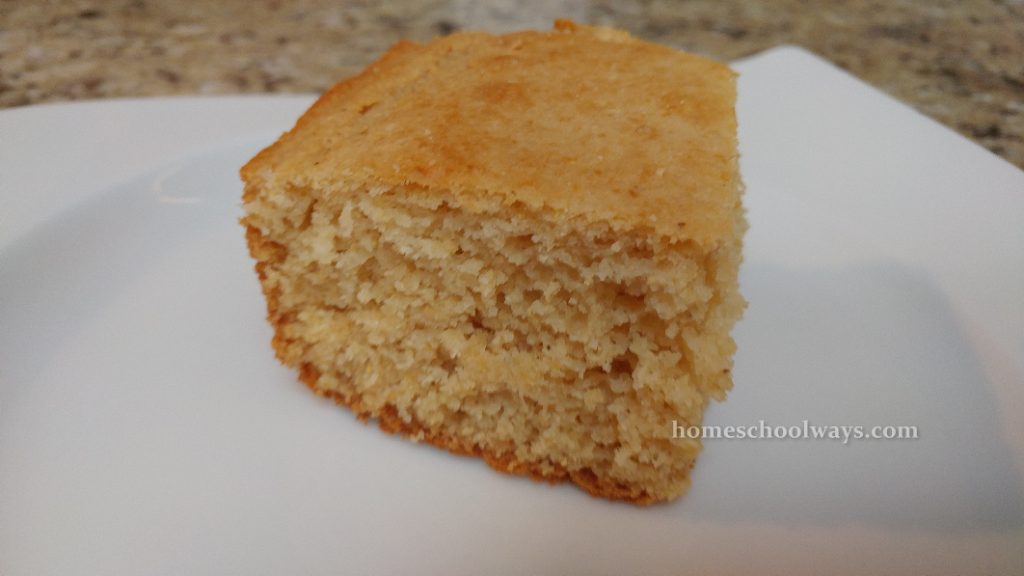The last time I blogged about Story of the World and our adventures in history was in October. That does not mean we have done done history. In fact, today we covered chapter 34. I suppose you can say I’m a bit behind in blogging about SOTW. My apologies. I will do my best to recount our efforts and catch up in the next couple of months.
Chapter 6 dealt with new colonies in the new world: Plymouth Plantation and New Amsterdam. For our craft, we made cornbread based on the recipe provided in the Activity Book – an original Wampanoag recipe with modern ingredients.
I modified the recipe a bit: soy milk instead of “milk,” vegetarian margarine (we like Smart Balance) instead of “margarine,” and honey instead of sugar. The one egg needed in the recipe can be replaced with Egg Replacer, of course. Even with all the substitutions, the cornbread came out well and everybody enjoyed it. I made some vegetarian chili and a cabbage salad and that was our lunch.
The kids loved to hear the story of The Mayflower all over again. We have covered it every year around Thanksgiving and they remembered some bits. The thing is, I don’t harp so much on dates and details. Maybe I should. The way I learned history was dry and fact-oriented and I want them to get into history through the avenue of a story.
I had good history teachers, but the way they taught us was via a textbook. Here are the five reasons why the peasant revolts happened in 1907; memorize the years when King Stephen the Great reigned; now list the seven outcomes of World War II. I never understood why people got interested in history. What was the big deal?
Well, now that I am older, I look at history differently – as a story. I think that Susan Wise Bauer inspired me in that way, but I grew into this experience organically, through my fascination with royalty and by watching period dramas like ‘Downton Abbey’ and, more recently, ‘Victoria.’
You get the story and then you start asking questions about the people, the times, the inventions, and the government of the era. You get answers by Googling, by looking things up in a history encyclopedia, by listening to music from that time, by buying a history magazine etc. And then you know more about what happened and why. You discover you love history because it is so fascinating to hang on to the story.
That’s my strategy with the kids and I think it works because my son declares he loves history. My daughter – not so much, but she is still young. When my son was my daughter’s age, he was OK with history, but he would not declare his love for it.


Yay!!! Thanks!!
Thank you for encouraging me.